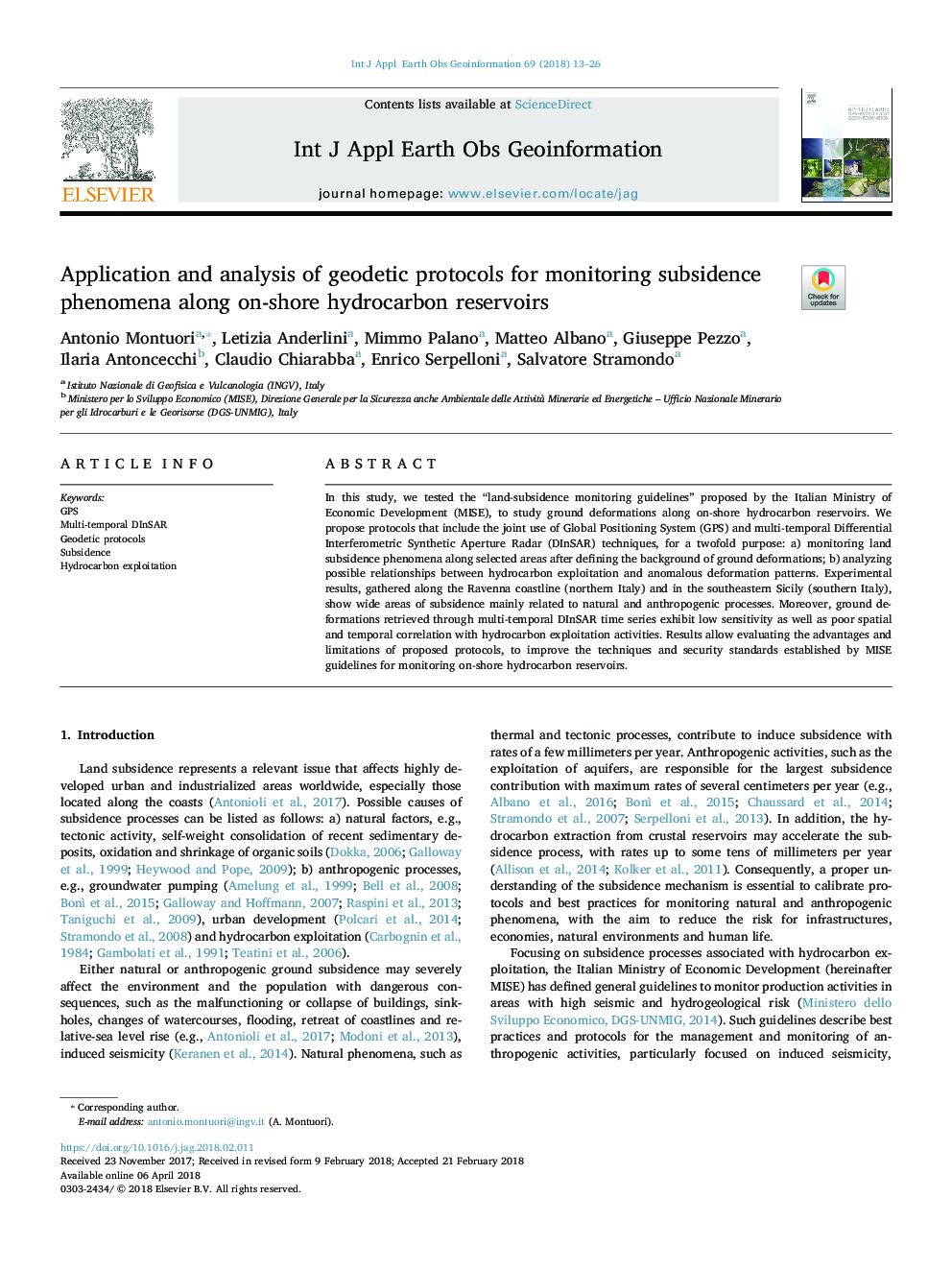| Article ID | Journal | Published Year | Pages | File Type |
|---|---|---|---|---|
| 8867858 | International Journal of Applied Earth Observation and Geoinformation | 2018 | 14 Pages |
Abstract
In this study, we tested the “land-subsidence monitoring guidelines” proposed by the Italian Ministry of Economic Development (MISE), to study ground deformations along on-shore hydrocarbon reservoirs. We propose protocols that include the joint use of Global Positioning System (GPS) and multi-temporal Differential Interferometric Synthetic Aperture Radar (DInSAR) techniques, for a twofold purpose: a) monitoring land subsidence phenomena along selected areas after defining the background of ground deformations; b) analyzing possible relationships between hydrocarbon exploitation and anomalous deformation patterns. Experimental results, gathered along the Ravenna coastline (northern Italy) and in the southeastern Sicily (southern Italy), show wide areas of subsidence mainly related to natural and anthropogenic processes. Moreover, ground deformations retrieved through multi-temporal DInSAR time series exhibit low sensitivity as well as poor spatial and temporal correlation with hydrocarbon exploitation activities. Results allow evaluating the advantages and limitations of proposed protocols, to improve the techniques and security standards established by MISE guidelines for monitoring on-shore hydrocarbon reservoirs.
Keywords
Related Topics
Physical Sciences and Engineering
Earth and Planetary Sciences
Computers in Earth Sciences
Authors
Antonio Montuori, Letizia Anderlini, Mimmo Palano, Matteo Albano, Giuseppe Pezzo, Ilaria Antoncecchi, Claudio Chiarabba, Enrico Serpelloni, Salvatore Stramondo,
